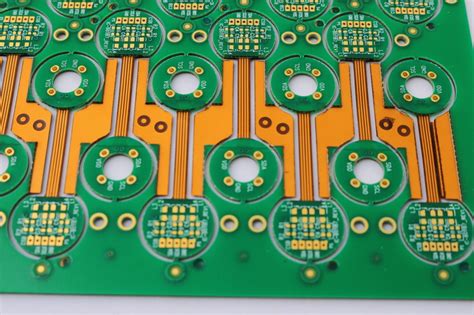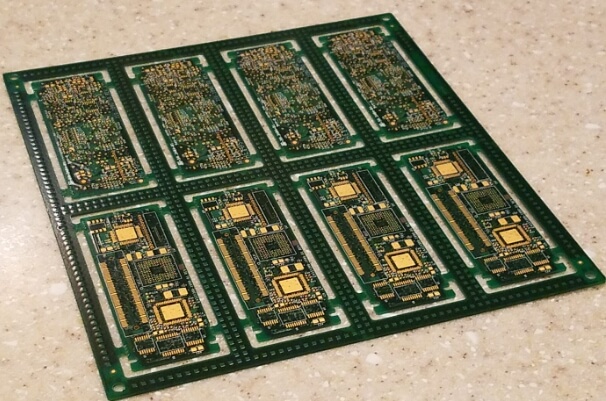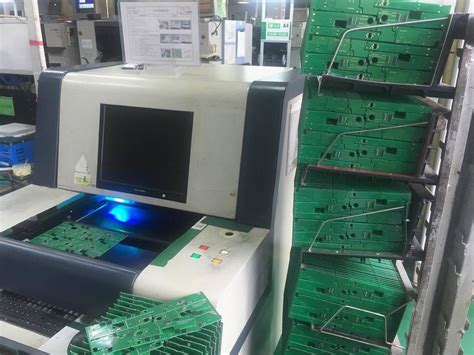Optimizing large-scale testing of simple PCB circuit boards to improve production efficiency
Introduction
Today, electronic products have penetrated into all aspects of people’s daily lives. With the continuous rise of various types of connected electronic products such as Internet of Things (IoT) devices, consumer medical devices and automotive electronics, they have become indispensable.

These products generally have a common feature: large-scale production, but relatively simple circuit board design. This feature poses a severe challenge to manufacturers, who need to maintain efficient production speeds while also testing circuit boards on a large scale. Therefore, it has become a top priority to explore a more cost-effective way of large-scale production and testing.
With the rapid advancement of technology,
the market demand for cost-effective electronic products has risen sharply, which has also driven the unprecedented demand for large-scale manufacturing in the entire society. Manufacturers are under tremendous pressure to innovate production processes, reduce costs and optimize production cycles, and urgently need to solve the above challenges to cope with the continued growth in demand for electronic equipment. In this context, the online testing process for these products also needs to keep pace with the times and closely follow the dynamic needs of industry development.
Faced with the continuous changes in the industry landscape, manufacturers are standing at the crossroads of transformation.
The current priority is to reduce the production cost of electronic products while improving operational efficiency and flexibility. They need to overcome multiple challenges, including streamlining production processes, reducing operating costs, and accelerating production cycles. To achieve this goal, manufacturers must cleverly combine innovative methods and advanced technologies to optimize the online test process and ensure the quality and functionality of electronic products, as shown in Figure 1.

Figure 1: Typical production line with multiple test sites
Dilemmas and challenges faced by traditional test methods
In recent years, the market demand for mass production of PCB circuit boards has increased significantly, which requires manufacturers to simplify the production process to shorten the production cycle.
One of the keys to ensure high production quality lies in the test process, especially for those circuit boards that require regular testing and flash programming. This link is crucial. Traditional test solutions usually set up multiple test sites, including online testing (ICT), flash programming, and functional testing. However, this method is not suitable for large-scale production due to limited test throughput and high costs caused by setting up multiple test sites.
Easily cope with large-scale production with the help of industry methods and solutions
In order to cope with the testing difficulties in the process of mass production of simple circuit boards, an effective solution is to adopt circuit board panelization production technology. In the manufacturing industry, the use of high-layer PCB panelization has become popular, and this technology can significantly improve production efficiency and output. Since low-cost electronic products are often small and simple, multiple such boards can be combined into a panel of appropriate size, which is easier to manage and operate.
PCB panelization technology refers to manufacturers combining multiple boards into one and assembling them into an overall array. This technology makes it more economical and efficient to transfer these small and simple boards on the production line by combining them into a panel of appropriate size.
With panelization technology, operators only need to load a panel file to test all boards at the same time. After assembly, the panel is separated into individual PCBs in the segmentation process, which is called panelization. Each board can then be easily panelized or separated from the array and then packaged or installed in the product.
In the production process, the assembly of simple circuit boards is usually very efficient, which requires the testing process to have a fast turnover speed to ensure that it matches the production speed.
Many industries are using simple circuit board devices in large quantities, such as:
· Automotive electronic components, such as sensor circuit boards, controller circuit boards, and engine control units (ECUs)
· Medical devices, such as blood glucose meters, blood pressure monitors, and pulse oximeters
· IoT devices, such as smart speakers, smart door locks, and home security systems
· Mobile devices, such as smartphones, wearable devices, and tablets
PCB panelization technology not only enables small circuit boards to better adapt to standard production processes, but also significantly improves production efficiency. Its advantages include saving time and cost, improving work efficiency, enhancing product quality, and increasing production.
How does PCB panel parallel testing improve test efficiency?
Using parallel testing methods, multiple circuit boards can be tested at the same time. This PCB panel parallel testing method can efficiently perform online testing to meet the needs of large-scale production (see Table 1).

Table 1: Comparison of sequential and parallel testing time
For example, if the test time for a single board is 6 seconds, then in order to meet the needs of mass production, it is necessary to ensure that 4 boards can be tested every 6 seconds, that is, the total number of tests per hour must reach 2,400. If the tester only tests one board at a time, this requirement is obviously not met. Therefore, in order to achieve the required test throughput, manufacturers need to consider the following two options:
· Purchase 4 testers, but this requires more operators and occupies a larger test site
· Purchase a tester that can test 4 boards in parallel
If a tester is used to test 4 boards in sequence, the time required will be 4 times the test time of a single board, a total of 16 seconds. However, if 4 boards can be tested in parallel, the overall test time can be reduced to about 6 seconds. Compared with sequential testing, this method can save 10 seconds of test time.
Large-scale parallel testing – maximize test efficiency and shorten test time
To test large quantities of simple PCBAs, a test system that integrates ICT (in-circuit test), flash programming and functional testing is required to meet the operational requirements of mass production. Large-scale parallel testing of circuit boards can achieve simultaneous testing of multiple circuit boards with the help of multiple test core points.
In traditional test configurations, online test equipment usually only supports testing up to 4 circuit boards at a time.
However, in a manufacturing environment that pursues high efficiency and mass production, there is an increasing demand for parallel testing of more circuit boards. To meet this demand, online test equipment needs to be able to test 10 to 20 circuit boards at the same time.
Due to the use of simpler and more compact circuit board designs, simple electronic products can arrange 20 circuit boards on a panel of suitable size. Online test equipment with large-scale parallel testing capabilities is equipped with test core points that can test all circuit boards on the panel at the same time. This test method actually integrates the functions of multiple test equipment into a complete system.
In addition, large-scale parallel testing can significantly increase the density of panel testing,
enabling parallel testing of more circuit boards on the same panel at the same time. This greatly reduces the need for additional equipment, testers, and floor space, thereby reducing costs and enhancing production scalability. In general, massively parallel testing has shown significant advantages over standard parallel testing in high-volume manufacturing.
Table 2 shows the benchmark test results for a single board, a PCB panel with four boards, and a PCB panel with six boards. The test results show that as the number of boards on the PCB panel increases, the test throughput also increases accordingly. This achievement is due to the fact that parallel testing can test multiple boards at the same time, effectively shortening the overall test time.

Table 2: Test time for sequential and parallel testing PCBA
In comparison, sequential testing only tests one board at a time. Since all tests need to be completed before the next board can be tested, the test speed is relatively slow, which is easy to form a bottleneck in the test process, thereby affecting the overall test efficiency. If parallel testing is used, that is, multiple units are tested at the same time, the test time of each unit can be effectively shortened. This improvement is of great significance to improving the throughput and efficiency of the overall test and can greatly optimize the test process.
Conclusion
In the mass production of simple PCBs, in order to optimize the test process, manufacturers use panelization technology in addition to parallel test systems. This technology can integrate smaller and simpler circuit boards into easy-to-manage panel sizes, which not only improves cost-effectiveness, but also greatly shortens the time required for loading and testing. At the same time, by implementing large-scale parallel testing, operators can test multiple circuit boards at the same time, which not only ensures the efficient conduct of the test, but also simplifies the measurement process of functional testing, and provides a cost-effective solution to the challenges encountered in the mass production of simple circuit boards. Therefore, large-scale parallel testing has become an indispensable core solution for performing tests in the mass production environment of circuit boards, which can quickly provide accurate and reliable test results.







